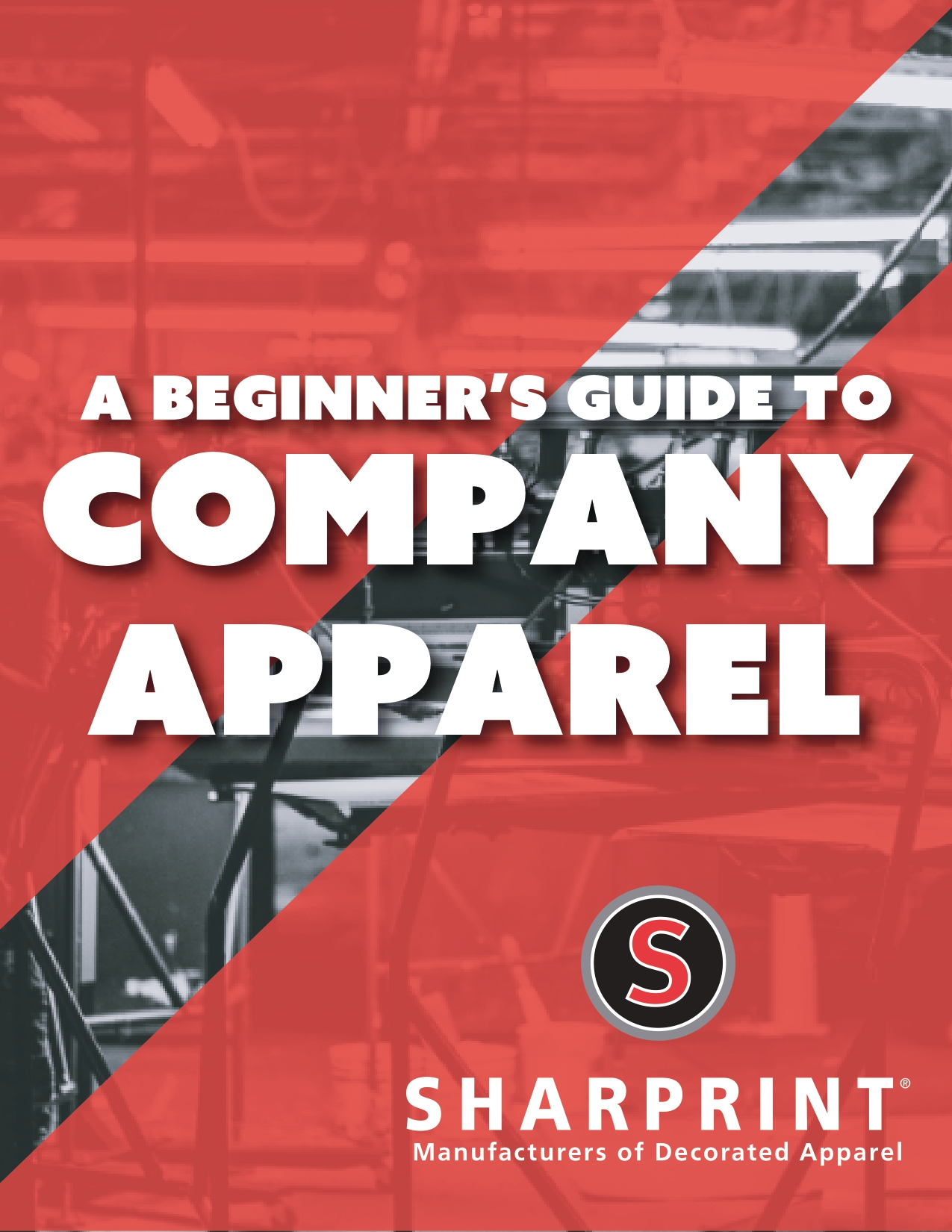How Are Stitch Counts Estimated?
Stitch count estimations are made by viewing the design at size and considering the fabric to be sewn. A stitch count on a fleece garment may be much higher than on a pique cotton garment. For an accurate stitch count for the best end embroidery, please be sure to let us know what kind of fabric we will be embroidering when requesting a quote. All quotes are subject to change until the final sewn logo has been approved.
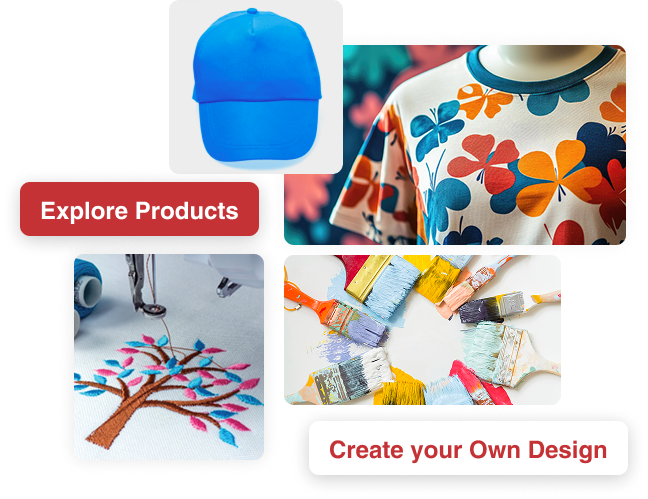
Types of Embroidery Stitches
3 Main Stitch Types
Different stitch techniques are used for specific purposes when embroidering a design or logo. Depending on the look of the design and the fabric being embroidered, we choose between 3 main stitch types. Each technique serves a unique purpose.
Satin Stitch
Walking Stitch
Fill Stitch
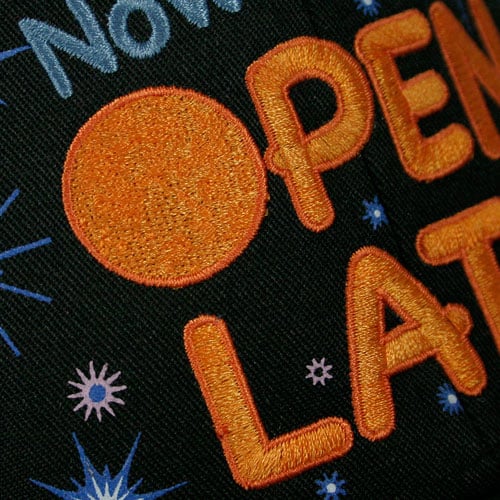
Satin Stitch
This is the most common embroidery stitch type and is used in the majority of lettering and design outlines.
In this example, you can see the center of the "O" is filled using a fill stitch. The edge of the "O" is reinforced using a satin stitch. The other text uses a satin stitch as the fill and outline. The blue "NOW" text is also satin stitch. This design is sewn over a screen print - clever mixed media approach!
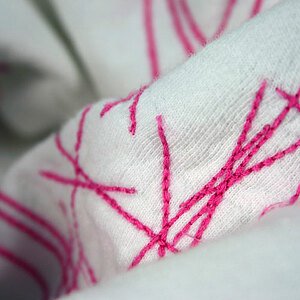
Walking Stitch
This type of embroidery stitch is also referred to as a running stitch. The dashed line style is typically used to capture very small details in embroidery designs. The walking stitch is commonly used to re-create the look of hand sewing in many retail designs.
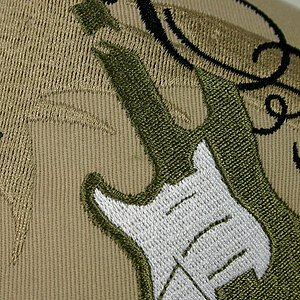
Fill Stitch
This stitch is used to fill large areas of color. The fill stitch is also used to create an underlay foundation to layer more complicated embroidery designs or designs being sewn on flimsy materials (rayon, silk, etc). On high pile garments such as fleece, a fill stitch may be used to create a foundation so an acceptable amount of detail is not lost in the fabric fibers.
This example shows a fill stitch used in most areas to create a nice solid shape. Satin stitch is used in the black swirl and a running stitch is used in the guitar fret detail. The twill fabric has its own texture in the background.
Thread Types
There are two types of thread used to embroider a logo or design. They are rayon and polyester. The logo and fabric to be embroidered are determining factors for which we use. Each type of embroidery thread has its own set of advantages and our selection provides the best possible result.
Thread Colors
Sharprint’s artists and digitizers select the thread that most closely matches the assigned Pantone color. If no PMS color is called out in the art file, we will match the screen image as closely as possible. Since all monitors preview differently, it is best to select a target Pantone color.
We also have thread books available. If you are able to stop in, you can reference a thread chart and select the thread you would like to use.
We do offer some specialty thread types. It is important to note that these threads do not work well for all logos and fabrics. Let your customer service rep know if you are interested in a specialty thread.
Metallic
Rainbow
Color changing
Reflective
Neon
Glow-in-the-dark
Brands We Use
Madeira
Robinson- Anton
Top Embroidery Articles
How to Use Pantone Colors for Embroidery & Screen Printing
Why Embroidery Sew Outs May Vary from the Finished Product
The 3 Main Types of Specialty Embroidery Stitches
Advantages of Custom Embroidery for Business Brand Promotion
Embroidery Backing - A World Of Options
Turning Art Files Into Embroidery with Digitizing
Know Your Options When Creating Custom Embroidery
A Beginner's Guide To Company Apparel
Custom company apparel can benefit your business in a variety of ways. Branding your uniforms, t-shirts, or promotional apparel with personality can help develop a strong company image that people will remember.
This guide is a primer for the main points to consider when ordering custom company clothing and how to start the process.
